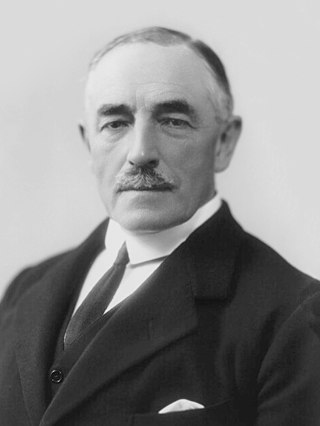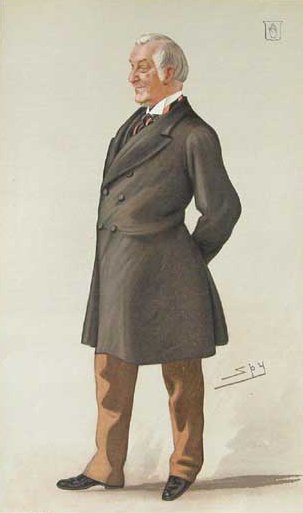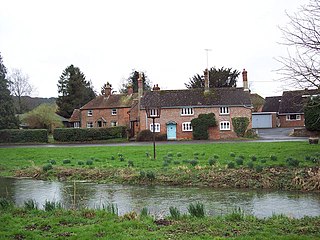
Tidworth is a garrison town and civil parish in south-east Wiltshire, England, on the eastern edge of Salisbury Plain. Lying on both sides of the A338 about 3+1⁄2 miles (5.6 km) north of the A303 primary route, the town is approximately 8 miles (13 km) west of Andover, 12 miles (19 km) south of Marlborough, and 13 miles (21 km) north by north-east of Salisbury. The population of the parish at the 2011 census was approximately 10,600.

Ludgershall is a town and civil parish 16 miles (26 km) north east of Salisbury, Wiltshire, England. It is on the A342 road between Devizes and Andover. The parish includes Faberstown which is contiguous with Ludgershall, and the hamlet of Biddesden which lies 2 miles (3.2 km) to the east, on the border with Hampshire.

The Studd brothers, Sir John Edward Kynaston, George (GB) and Charles (CT), were Victorian gentleman cricketers, educated at Eton and Cambridge. These three brothers represented Eton in the Eton v Harrow annual needle match and represented Cambridge at cricket and dominated the Cambridge cricket scene in the early 1880s.

Sir John Edward Kynaston Studd, 1st Baronet, known as "JEK", was a British cricketer, businessman and Lord Mayor of London.

Vaynol or Y Faenol is a country estate dating from the Tudor period near Y Felinheli in Gwynedd, North Wales. It has 1,000 acres (4.0 km2) of park, farmland, and gardens, with more than thirty listed buildings, surrounded by a wall which is 7 miles (11 km) long. "Y Faenol" means "the manor" and is a mutated form of the Welsh word maenol.

John Smith (1656–1723) of Tedworth House, Hampshire, was an English politician who sat in the English and British House of Commons between 1678 and 1723. He served as Speaker and twice as Chancellor of the Exchequer.

Thomas Assheton Smith (the elder) (1752 – 12 May 1828) was an English landowner and all-round sportsman who played a major part in the development of the Welsh slate industry.

Sir John Eardley Eardley-Wilmot, 2nd Baronet was a politician and judge in the United Kingdom. He was Member of Parliament (MP) for South Warwickshire from 1874 to 1885.

Thomas Assheton Smith (the younger) (2 August 1776 – 9 September 1858) was an English landowner and all-round sportsman who was notable for being one of the outstanding amateur cricketers of the early 19th century. He was a Tory politician who sat in the House of Commons from 1821 to 1837. He was also known for his pioneering work on the design of steam yachts in conjunction with the Scottish marine engineer Robert Napier.
This article is about the particular significance of the year 1825 to Wales and its people.
This article is about the particular significance of the year 1827 to Wales and its people.
This article is about the particular significance of the year 1828 to Wales and its people.

West Dean is a village and civil parish in southeast Wiltshire, England; the Wiltshire/Hampshire border runs through the eastern part of the village. The village is on the River Dun, about 7 miles (11 km) east of Salisbury and the same distance northwest of Romsey.
Brigadier General Herbert William Studd was an English first-class cricketer and soldier.

St Mary's Church in South Tidworth, Wiltshire, England, was built in 1878. It is recorded in the National Heritage List for England as a designated Grade I listed building, and is now a redundant church in the care of the Churches Conservation Trust.

Tidworth Camp is a military installation at Tidworth in Wiltshire, England. It forms part of the Tidworth, Netheravon and Bulford (TidNBul) Garrison.
Robert Scott (c1746-1808) was a British politician who sat in the House of Commons between 1774 and 1780.

John Johnson was an English architect who specialised in religious buildings and churches in the Gothic style. He was regularly employed by the civil engineer Sir John Kelk to design the homes and public buildings Kelk funded. Johnson is best known for his collaboration with Alfred Meeson on designs for Alexandra Palace in north London; his designs for the Church of St Edward the Confessor in Romford, Essex; and for the Grade I listed St Mary's Church in Tidworth, Wiltshire, which was completed the year he died.
Sir John Kelk, 1st Baronet was a British Conservative Party politician, builder and public works contractor.

Thomas Smith, of South Tidworth, Hampshire, was a British landowner and Whig politician who sat in the House of Commons between 1709 and 1728.














